Plymouth Naval Memorial
Roll of Honour
World War One
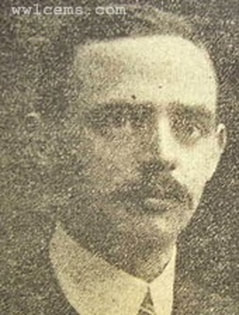
Able Seaman
Enoch Barton
J/6680 Royal Navy H.M.S. Vanguard
Killed in an explosion, 9th July 1917, aged 29.
Panel 21.
Son of William Henry and Eleanor Barton, of 850, Padiham Rd., Burnley, Lancs. Art teacher at the Technical School, Burnley. Mason of Red Rose of Lancaster Lodge No. 1504, Padiham. Native of Padiham.
Enoch Barton
J/6680 Royal Navy H.M.S. Vanguard
Killed in an explosion, 9th July 1917, aged 29.
Panel 21.
Son of William Henry and Eleanor Barton, of 850, Padiham Rd., Burnley, Lancs. Art teacher at the Technical School, Burnley. Mason of Red Rose of Lancaster Lodge No. 1504, Padiham. Native of Padiham.
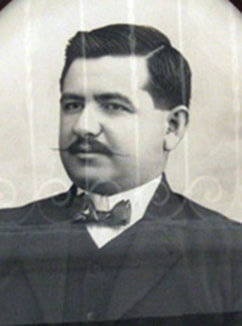
361065 Officer's Cook 1st Class
John Borg
H.M.S. "Louvain." Royal Navy
20th January 1918, aged 33.
Panel 28.
Son of Lorenzo and Anni Borg; husband of Lucarda Borg, of 17, Strada S. Gaetano, Hamrun, Malta.
Picture courtesy of Francis Borg.
John Borg
H.M.S. "Louvain." Royal Navy
20th January 1918, aged 33.
Panel 28.
Son of Lorenzo and Anni Borg; husband of Lucarda Borg, of 17, Strada S. Gaetano, Hamrun, Malta.
Picture courtesy of Francis Borg.
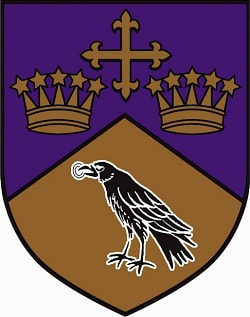
Lieutenant-Commander
Frank Tomkinson Brade, D. S. C.
H. M. C. M. B. "No 67A"Royal Naval Reserve
18th August 1919, aged 32.
Panel 32.
Husband of Maud E. Brade, of 5, St. Nicholas Rd., Wallasey.
The information below supplied by 'The Ellesmerian Club', the alumni organisation for Ellesmere College where Frank was a pupil.
Frank Tomkinson Brade, D. S. C.
H. M. C. M. B. "No 67A"Royal Naval Reserve
18th August 1919, aged 32.
Panel 32.
Husband of Maud E. Brade, of 5, St. Nicholas Rd., Wallasey.
The information below supplied by 'The Ellesmerian Club', the alumni organisation for Ellesmere College where Frank was a pupil.
Frank Tomkinson Brade, the only son of John Baddeley, a political agent, and his wife, Sarah, was born on 25th September 1886 at Cheetham Hill, Manchester. At the time they lived at Victoria Crescent, Eccles. A younger sister, Hilda Kathleen, completed the family when she was born in 1891.
From the age of six, Frank was educated locally in Pendleton but, four months before his tenth birthday, he was one of twenty six new boys admitted to Ellesmere College on 1st May 1896. He was allocated a bed in the ‘Woodard’ dormitory and a place in From Lower I under the instruction of Mr. C. D. Penn, himself an Old Ellesmerian. There were approximately one hundred and ninety boys on the nominal roll.
Frank boarded for five terms and, due to his very young age, it is not surprising that there is no mention for him in any college or dormitory sports team nor of any involvement in any extra-curricular activities. He left the college in December 1897 when just eleven years and three months old. Where he continued his education is not known but the 1901 Census records that he was a 14-year-old scholar, presumably at Manchester High School, and living at home with his parents at 104, the Park, Eccles.
However, on 10th September that year he started his career at sea when he was taken on as an ‘apprentice’ crew member of the 1,774 tonne, 4 mast barque ‘Silverhorn’. He served on this ship for two years and then served on a sister ship ‘Matterhorn’ until the end of June 1905. Frank had not been idle during those four years and he had put the knowledge he had learnt to good use, qualifying as a ‘Second Mate of a Foreign Going Ship’ on 5th October 1905. He served on various steam powered ships during the next four years, seeing almost continuous service and with only one appreciable break between ships towards the end of 1908. He was deemed to be competent to be a ‘First Mate’ in February 1909 and his rapid progress continued when he qualified as ‘Master of a Foreign Going Ship’ on 11th September 1911.
In April 1910, he had transferred to the Royal Navy, in the rank of Acting Sub-Lieutenant and he initially served on HMS Suffolk but after just one month he transferred to HMS Aboukir – she was sunk by the German U-boat U9 on 22nd September 1914, just weeks after the outbreak of war. Frank saw service on HMS Teviot and, in April 1913, he was promoted to Lieutenant.
That year, on the day before Christmas Eve, he married Maud Ethel Thorpe at Manchester Cathedral and their marriage certificate records his occupation as that of ‘Master Mariner’. They set up home at St. Nicholas Road, Wallasey and went on to have two children Joan Maud (b.1916) and Frank Victor (b.1918) who was to die on active service with the Royal Air Force in 1944.
In 1917 Frank was commanding Coastal Motor Boat (CMB) No. 5 and in an action against German Destroyers with three other CMB’s in Zeebrugge Harbour on 7th April that year he was awarded the Distinguished Service Cross. The citation read “for having assisted Coastal Motor Mechanic Logan to re-start the engine after breaking down, the operation being under fire’. The London Gazette of 11th May 1917 recorded that “Their Lordships high appreciation was expressed”.
Frank survived the war and remained in the Royal Navy and it was on the night of 17/18th August 1919 that he was involved in what would become known as ‘The Kronstadt Raid’. The scale and complexity of British operations in the budding USSR is not generally admitted, nor is Winston Churchill’s personal role in it. Following the Bolshevik revolution, internal conflict within Russia developed into all out civil war and Churchill was determined to intensify Britain’s fight against the revolution. Of particular interest was the Russian Baltic Fleet at anchor in the harbour at Kronstadt. Churchill’s strategy was that the Royal Navy should be the dominant force in the Baltic and, to deal with the potential threat of Russia’s capital ships he authorised a raid on them.
On the night of 17th August eight coastal motorboats, guided by local Finnish smugglers familiar with the waters, set out from Biorko for their journey across Petrograd Bay. Frank captained CMB No. 62. At the same time a diversionary bombing attack was launched on the heavily defended harbour by the RAF. All eight boats made it through to the main docking area but in such a confined space their presence was soon noticed and the Russians opened fire on them with every available weapon they had. MCB No. 86 broke down outside the harbour and MCB No.24 was sunk almost at once.
Frank was in the second wave to enter the harbour by which time the basin had thoroughly woken up and was alive with general pandemonium and confusion. Searchlights were sweeping the water indiscriminately and Russian machine guns making their horrible typewriter sounds were click-clacking all over the place*. Almost as soon as he reached the confines of the basin Frank collided with MCB No. 79 under the command of Lieutenant Bremner. The collision almost cut MCB No. 79 in half and, without a reverse gear, Frank was unable to extricate himself from the wreckage. As such, having made sure the crew of MCB No. 79 were safely aboard his vessel, he powered forward and pushed both boats out of the basin.
Frank still had his torpedoes so determined to launch an attack and aimed for the Gavriel but both torpedoes missed their target. As Frank’s MCB was heading away a shell from the Gavriel struck her and wrecked her engines. She remained stopped and was eventually sunk by gunfire….. Brade lost his life, but Bremner survived although badly wounded. Both showed a wonderful example of courage**… Frank’s body was never recovered and his sacrifice is commemorated on the Plymouth Naval Memorial, the ‘Slopes’ Buxton War Memorial and at St. Nicholas Church, Wallasey. His name was added to the War Memorial at Ellesmere College during 2017.
Of the eight craft that entered the ‘strongest naval fortress in the world’ that night, three were sunk, six officers and nine ratings were killed and three officers and six ratings captured. The ‘powers that be’ determined this was an ‘acceptable cost’ as they achieved their objective and sank two battleships, a large depot ship and a destroyer.
For his service to his country, and in addition to the Distinguished Service Cross, Frank was awarded the Victory Medal, the British War Medal and the 1914 / 1915 Star. He was posthumously awarded the Order of Liberty by the Government of the Republic of Estonia on 26th March 1920.
‘Operation Kronstadt’ Author: Harry Ferguson
*“Baltic Episode” Author: Captain Augustus Agar
From the age of six, Frank was educated locally in Pendleton but, four months before his tenth birthday, he was one of twenty six new boys admitted to Ellesmere College on 1st May 1896. He was allocated a bed in the ‘Woodard’ dormitory and a place in From Lower I under the instruction of Mr. C. D. Penn, himself an Old Ellesmerian. There were approximately one hundred and ninety boys on the nominal roll.
Frank boarded for five terms and, due to his very young age, it is not surprising that there is no mention for him in any college or dormitory sports team nor of any involvement in any extra-curricular activities. He left the college in December 1897 when just eleven years and three months old. Where he continued his education is not known but the 1901 Census records that he was a 14-year-old scholar, presumably at Manchester High School, and living at home with his parents at 104, the Park, Eccles.
However, on 10th September that year he started his career at sea when he was taken on as an ‘apprentice’ crew member of the 1,774 tonne, 4 mast barque ‘Silverhorn’. He served on this ship for two years and then served on a sister ship ‘Matterhorn’ until the end of June 1905. Frank had not been idle during those four years and he had put the knowledge he had learnt to good use, qualifying as a ‘Second Mate of a Foreign Going Ship’ on 5th October 1905. He served on various steam powered ships during the next four years, seeing almost continuous service and with only one appreciable break between ships towards the end of 1908. He was deemed to be competent to be a ‘First Mate’ in February 1909 and his rapid progress continued when he qualified as ‘Master of a Foreign Going Ship’ on 11th September 1911.
In April 1910, he had transferred to the Royal Navy, in the rank of Acting Sub-Lieutenant and he initially served on HMS Suffolk but after just one month he transferred to HMS Aboukir – she was sunk by the German U-boat U9 on 22nd September 1914, just weeks after the outbreak of war. Frank saw service on HMS Teviot and, in April 1913, he was promoted to Lieutenant.
That year, on the day before Christmas Eve, he married Maud Ethel Thorpe at Manchester Cathedral and their marriage certificate records his occupation as that of ‘Master Mariner’. They set up home at St. Nicholas Road, Wallasey and went on to have two children Joan Maud (b.1916) and Frank Victor (b.1918) who was to die on active service with the Royal Air Force in 1944.
In 1917 Frank was commanding Coastal Motor Boat (CMB) No. 5 and in an action against German Destroyers with three other CMB’s in Zeebrugge Harbour on 7th April that year he was awarded the Distinguished Service Cross. The citation read “for having assisted Coastal Motor Mechanic Logan to re-start the engine after breaking down, the operation being under fire’. The London Gazette of 11th May 1917 recorded that “Their Lordships high appreciation was expressed”.
Frank survived the war and remained in the Royal Navy and it was on the night of 17/18th August 1919 that he was involved in what would become known as ‘The Kronstadt Raid’. The scale and complexity of British operations in the budding USSR is not generally admitted, nor is Winston Churchill’s personal role in it. Following the Bolshevik revolution, internal conflict within Russia developed into all out civil war and Churchill was determined to intensify Britain’s fight against the revolution. Of particular interest was the Russian Baltic Fleet at anchor in the harbour at Kronstadt. Churchill’s strategy was that the Royal Navy should be the dominant force in the Baltic and, to deal with the potential threat of Russia’s capital ships he authorised a raid on them.
On the night of 17th August eight coastal motorboats, guided by local Finnish smugglers familiar with the waters, set out from Biorko for their journey across Petrograd Bay. Frank captained CMB No. 62. At the same time a diversionary bombing attack was launched on the heavily defended harbour by the RAF. All eight boats made it through to the main docking area but in such a confined space their presence was soon noticed and the Russians opened fire on them with every available weapon they had. MCB No. 86 broke down outside the harbour and MCB No.24 was sunk almost at once.
Frank was in the second wave to enter the harbour by which time the basin had thoroughly woken up and was alive with general pandemonium and confusion. Searchlights were sweeping the water indiscriminately and Russian machine guns making their horrible typewriter sounds were click-clacking all over the place*. Almost as soon as he reached the confines of the basin Frank collided with MCB No. 79 under the command of Lieutenant Bremner. The collision almost cut MCB No. 79 in half and, without a reverse gear, Frank was unable to extricate himself from the wreckage. As such, having made sure the crew of MCB No. 79 were safely aboard his vessel, he powered forward and pushed both boats out of the basin.
Frank still had his torpedoes so determined to launch an attack and aimed for the Gavriel but both torpedoes missed their target. As Frank’s MCB was heading away a shell from the Gavriel struck her and wrecked her engines. She remained stopped and was eventually sunk by gunfire….. Brade lost his life, but Bremner survived although badly wounded. Both showed a wonderful example of courage**… Frank’s body was never recovered and his sacrifice is commemorated on the Plymouth Naval Memorial, the ‘Slopes’ Buxton War Memorial and at St. Nicholas Church, Wallasey. His name was added to the War Memorial at Ellesmere College during 2017.
Of the eight craft that entered the ‘strongest naval fortress in the world’ that night, three were sunk, six officers and nine ratings were killed and three officers and six ratings captured. The ‘powers that be’ determined this was an ‘acceptable cost’ as they achieved their objective and sank two battleships, a large depot ship and a destroyer.
For his service to his country, and in addition to the Distinguished Service Cross, Frank was awarded the Victory Medal, the British War Medal and the 1914 / 1915 Star. He was posthumously awarded the Order of Liberty by the Government of the Republic of Estonia on 26th March 1920.
‘Operation Kronstadt’ Author: Harry Ferguson
*“Baltic Episode” Author: Captain Augustus Agar
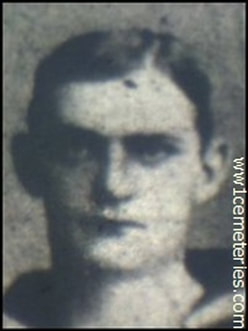
310770 Petty Officer Stoker
Frederick Richard Brook
H.M.S. "Goliath." Royal Navy
13th May 1915, aged 26.
Panel 6.
Son of Francis John and Emily Louisa Brook, of Egloshayle Rd., Wadebridge. Cornwall.
Frederick Richard Brook
H.M.S. "Goliath." Royal Navy
13th May 1915, aged 26.
Panel 6.
Son of Francis John and Emily Louisa Brook, of Egloshayle Rd., Wadebridge. Cornwall.
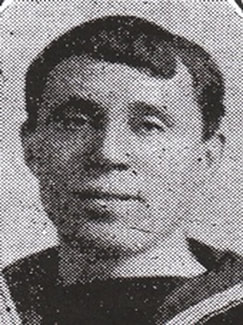
K/1894 Petty Officer Stoker
Matthew Rosevere Davey Burnard
Royal Navy (H.M. S/M. "E47.")
20th August 1917.
Panel 22.
Son of Mr and Mrs Burnard of Tregoodwell, Camelford, Cornwall
Camelford Roll of Honour
Extract taken from the Cornish and Devon Post dated 8th September 1917.
Mr & Mrs Burnard of Tregoodwell, Camelford have received the sad news of the death of their eldest son, Stoker Petty Officer Matthew R.D. Burnard, killed in action on one of H.M. ships last month. As a youth he was employed at the North Cornwall China Clay works which he left nearly nine years since, on attaining the age of 18 years, to join the navy. For some weeks he fought through the Jutland Battle. Mr Burnard was 26 years of age and was only married in March last to the daughter of Mr. W. Stott of Boscastle. The young widow resides at Teignmouth. Mr & Mrs Burnard had also one nephew killed in action at Salonika and another died of wounds in France. They have one son-in-law and six nephews still serving with the colours. Much sympathy has been expressed with the family in the death of Stoker Matt Burnard, a typical sailor, who possessed many excellent qualities.
Matthew Rosevere Davey Burnard
Royal Navy (H.M. S/M. "E47.")
20th August 1917.
Panel 22.
Son of Mr and Mrs Burnard of Tregoodwell, Camelford, Cornwall
Camelford Roll of Honour
Extract taken from the Cornish and Devon Post dated 8th September 1917.
Mr & Mrs Burnard of Tregoodwell, Camelford have received the sad news of the death of their eldest son, Stoker Petty Officer Matthew R.D. Burnard, killed in action on one of H.M. ships last month. As a youth he was employed at the North Cornwall China Clay works which he left nearly nine years since, on attaining the age of 18 years, to join the navy. For some weeks he fought through the Jutland Battle. Mr Burnard was 26 years of age and was only married in March last to the daughter of Mr. W. Stott of Boscastle. The young widow resides at Teignmouth. Mr & Mrs Burnard had also one nephew killed in action at Salonika and another died of wounds in France. They have one son-in-law and six nephews still serving with the colours. Much sympathy has been expressed with the family in the death of Stoker Matt Burnard, a typical sailor, who possessed many excellent qualities.
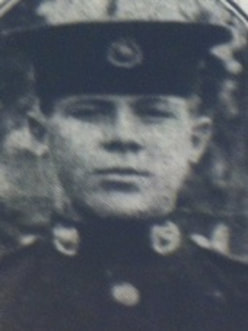
PLY/15899 Private
Jerome Cann
Royal Marine Light Infantry, H.M.S. "Amphion."
6th August 1914, aged 17.
Panel 4.
Son of Stephen and Mary Cann, of Trevena, Tintagel, Cornwall.
Jerome Cann
Royal Marine Light Infantry, H.M.S. "Amphion."
6th August 1914, aged 17.
Panel 4.
Son of Stephen and Mary Cann, of Trevena, Tintagel, Cornwall.
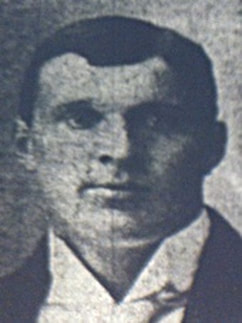
119312 Chief Petty Officer
Charles Dungey
Royal Navy, H.M.S. Monmouth
1st November 1914, aged 47.
Panel 1.
Son of the late Edward and Amelia Dungey, of Veryan, Grampound Rd., Cornwall; husband of Bessie J. Dungey, of 38, Elm Rd., Mannamead, Mutley, Plymouth.
Charles Dungey
Royal Navy, H.M.S. Monmouth
1st November 1914, aged 47.
Panel 1.
Son of the late Edward and Amelia Dungey, of Veryan, Grampound Rd., Cornwall; husband of Bessie J. Dungey, of 38, Elm Rd., Mannamead, Mutley, Plymouth.
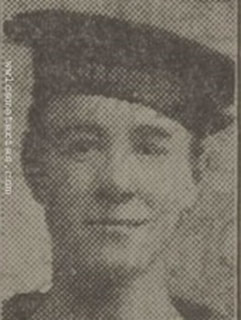
J/18696 Able Seaman
Arthur Harry Dwyer
Royal Navy, H.M.S. "Indefatigable."
31st May 1916, aged 19.
Panel 11.
Son of Jeremiah and Annie Dwyer, of 5, Chattan Place, Aberdeen. Native of. Warsash, Southampton.
Arthur Harry Dwyer
Royal Navy, H.M.S. "Indefatigable."
31st May 1916, aged 19.
Panel 11.
Son of Jeremiah and Annie Dwyer, of 5, Chattan Place, Aberdeen. Native of. Warsash, Southampton.
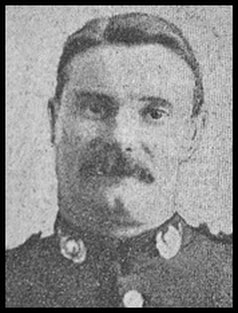
PLY/5543 Gunner
Francis John Eddolls
Royal Marine Light Infantry SS Joshua Nicholson
Drowned by Enemy Submarine, 18th March 1917, aged 43.
Panel 23.
Son of John and Amelia Eddolls, of Chippenham, Wilts; husband of Ida Maud Eddolls, of 45, Cromwell St., Burnley, Lancs.
Francis John Eddolls
Royal Marine Light Infantry SS Joshua Nicholson
Drowned by Enemy Submarine, 18th March 1917, aged 43.
Panel 23.
Son of John and Amelia Eddolls, of Chippenham, Wilts; husband of Ida Maud Eddolls, of 45, Cromwell St., Burnley, Lancs.
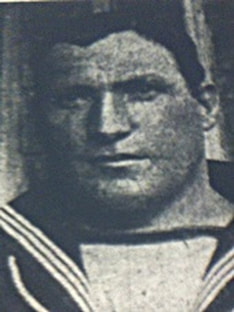
130379 Able Seaman
Thomas Pinch Lamerton
P.O., 2nd cl., C.G.
Royal Navy, H.M.S. Monmouth
1st November 1914.
Panel 1.
Thomas Pinch Lamerton
P.O., 2nd cl., C.G.
Royal Navy, H.M.S. Monmouth
1st November 1914.
Panel 1.
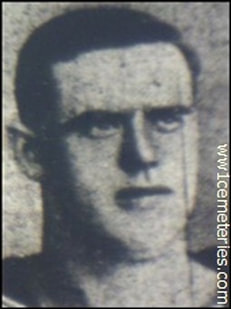
219105 Able Seaman
Ernest William Leverton
Royal Navy, H.M.S. "Defence."
31st May 1916, aged 31.
Panel 12.
Son of Joseph and Elizabeth Leverton, of St. Austell, Cornwall; husband of Jessie Beda Leverton, of The Grey House, Wadebridge, Cornwall.
Ernest William Leverton
Royal Navy, H.M.S. "Defence."
31st May 1916, aged 31.
Panel 12.
Son of Joseph and Elizabeth Leverton, of St. Austell, Cornwall; husband of Jessie Beda Leverton, of The Grey House, Wadebridge, Cornwall.
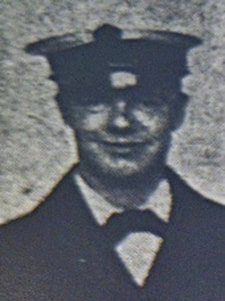
M/6159 Cook's Mate
Leonard Pearn
Royal Navy, H.M.S. Monmouth
1st November 1914. aged 19.
Panel 4.
Son of Mr. and Mrs. F. Pearn, of "Harbour View," Boscastle, Cornwall.
Leonard Pearn
Royal Navy, H.M.S. Monmouth
1st November 1914. aged 19.
Panel 4.
Son of Mr. and Mrs. F. Pearn, of "Harbour View," Boscastle, Cornwall.
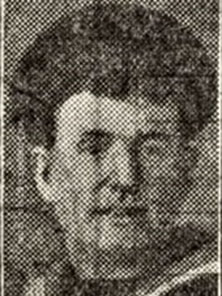
189300 Petty Officer Stoker
Charles Edward Marlow Platt
Royal Navy, H.M.S. "Broke."
31st May 1916.
Panel 14.
Charles Edward Marlow Platt
Royal Navy, H.M.S. "Broke."
31st May 1916.
Panel 14.
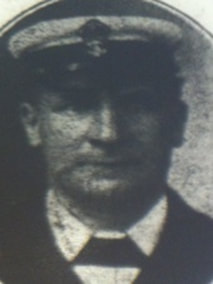
110170 Chief Petty Officer
Frederick Sercombe
Ch. P.O. C.G. Royal Navy, H.M.S. Monmouth
1st November 1914, aged 51.
Panel 1.
Son of William George Sercombe, of Bristol; husband of Annie Sercombe, of 3, Berries Mount, Bude, Cornwall.
Frederick Sercombe
Ch. P.O. C.G. Royal Navy, H.M.S. Monmouth
1st November 1914, aged 51.
Panel 1.
Son of William George Sercombe, of Bristol; husband of Annie Sercombe, of 3, Berries Mount, Bude, Cornwall.
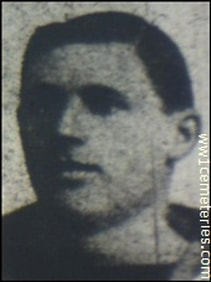
J/17926 Able Seaman
William John Williams
Royal Navy, H.M.S. "Defence."
31st May 1916, aged 19.
Panel 12.
Son of John and Mary Williams, of Bureau Place, Wadebridge, Cornwall.
William John Williams
Royal Navy, H.M.S. "Defence."
31st May 1916, aged 19.
Panel 12.
Son of John and Mary Williams, of Bureau Place, Wadebridge, Cornwall.
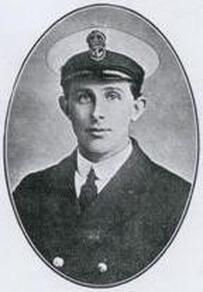
M/11841 Engine Room Artificer 4th Class
Arthur William Worden
H.M.S. Dartmouth, Royal Navy
killed in action, 15th May1917, aged 29.
Panel 22.
Buried at sea
Picture courtesy of John Garlington
Arthur William Worden
H.M.S. Dartmouth, Royal Navy
killed in action, 15th May1917, aged 29.
Panel 22.
Buried at sea
Picture courtesy of John Garlington




